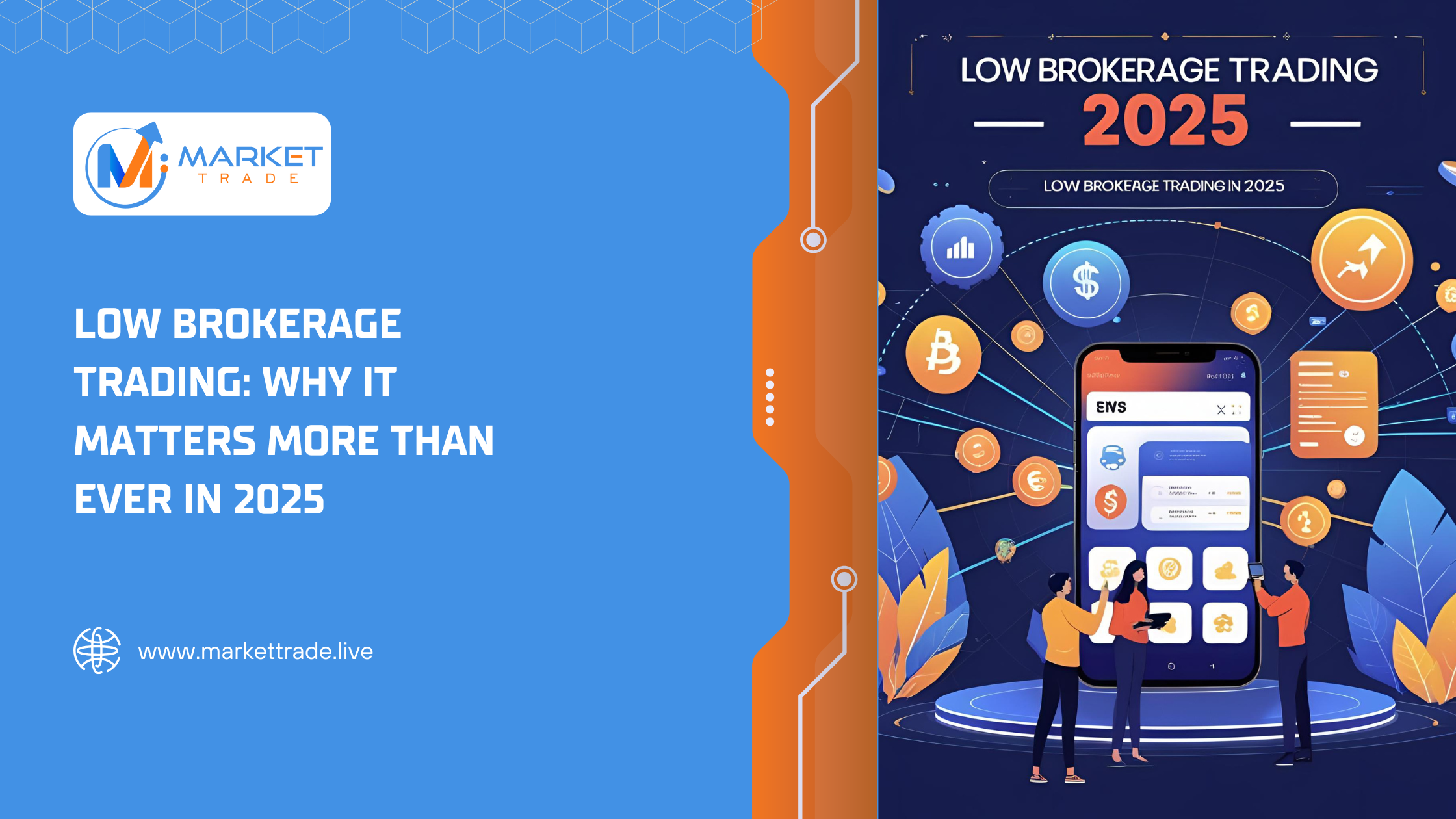
In a world where every paisa counts, traders are waking up to the power of low brokerage trading. As we enter 2025, cutting down on trading costs is no longer just a “nice-to-have” it’s a must-have strategy for long-term success. Whether you’re a beginner or a seasoned pro, understanding the impact of brokerage fees on your portfolio is essential. This blog breaks down why low brokerage matters, how it empowers retail traders, and what to watch out for when choosing a brokerage plan. 1. What Is Brokerage and Why Does It Matter? Brokerage fees are the charges your broker takes for executing trades. These can either be: A flat fee per trade A percentage of your trade value Now here’s the catch: over time, these charges can seriously eat into your profits, especially for frequent traders or those making small trades regularly. 2. The Rise of Low Brokerage Models With the digital revolution in full swing, competition among brokers has skyrocketed. The result? A shift to zero or ultra-low brokerage models, particularly for: Equity delivery trades Intraday trading Futures & Options (F&O) Commodity and currency trading This shift has opened doors for more retail participation in the markets. 3. How Low Brokerage Helps Retail Traders Here’s why low brokerage trading is a game-changer: ✅ Maximized Profits: More of your gains stay with you. ✅ Higher Trading Frequency: You can make multiple trades without worrying about costs. ✅ Better Compounding: Reduced friction = more capital to reinvest. ✅ Easier Diversification: Low fees allow you to split your capital across assets. ✅ Accessibility: Encourages beginners and part-time traders to participate confidently. In short, low brokerage puts retail traders on a level playing field with big players. 4. Myths About Low Brokerage Debunked Let’s bust some common misconceptions: ❌ “Low brokerage means low quality.”→ Many low-cost brokers offer modern platforms, tools, and strong customer service. ❌ “Hidden charges make it expensive anyway.”→ Not necessarily. Most top platforms are now transparent with their pricing. ❌ “It’s only for day traders.”→ Long-term investors can benefit too — especially in delivery-based trades. 5. What to Look For Beyond Fees While low brokerage is a big plus, don’t forget to consider: ⚙️ Platform features: Is it user-friendly? 📊 Research tools: Are analytics and charts available? 🧠 Educational support: Helpful for beginners ☎️ Customer service: Fast and responsive 🔒 Security & compliance: Ensure SEBI registration and data protection A low-cost broker with poor execution or buggy apps could cost you more than a higher-fee, quality experience. 6. Final Thoughts Low brokerage trading isn’t just a trend — it’s the future of investing in India. As more traders enter the market, the focus is shifting from expensive, old-school models to efficient, modern platforms that empower retail investors. If you’re serious about building wealth in 2025, keeping your trading costs low is one of the smartest moves you can make. Pair that with good strategy, discipline, and research — and you’re on your way to success.



